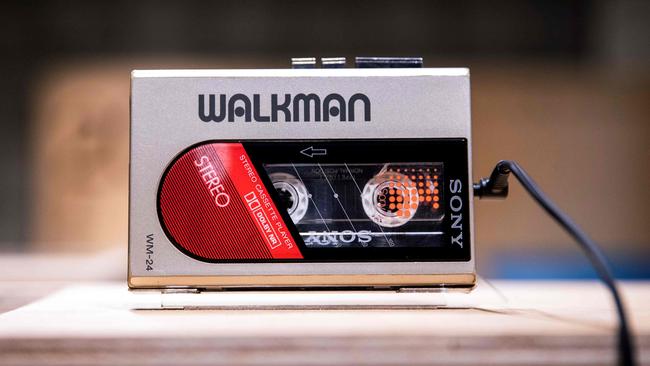The revolutionary little sound system that kicked off introspective headphone culture
It has been 40 years since Sony’s Walkman introduced the concept of your own mobile music library.

Soon after its 1979 launch, Sony’s Walkman was already seen as much more than a trendy audio player. Crucially, it became an escape hatch.
Whenever I cradled my Walkman as a kid, it transported me to new worlds. It made five-hour flights bearable and took the sting of loneliness out of the once ultimate injustice of strolling somewhere unaccompanied by music.
While my brother and I could agree on blasting Green Day’s Dookie from a bright yellow boom box, our Walkmans allowed us to find our own independent grooves. He listened to Tupac, I enjoyed the jazzy flow of A Tribe Called Quest’s Phony Rappers on repeat until I memorised every rhyme. I was lost inside my head, somewhere deeply peaceful and far, far away from wherever my body happened to be.
It has become easy since then to take that simple but potent pleasure for granted. Many of us are locked inside whatever beat or podcast is snaking through our earbuds today, distracting us from our morning commute or our struggle on the gym treadmill.
But the idea was once revolutionary, even shocking.
The Walkman, dreamed up by Sony bigwigs who wanted to entertain themselves with classical music while jetting across the globe, was anything but a guaranteed hit when it made its debut.
People were fine communally humming along to tinny transistor radios or parking in an easy chair while listening to vinyl.
But as Sony’s stocky cassette deck turns 40 this year, its influence is clear. The Walkman not only presaged Apple’s iPhone; it also spurred innovative audio technologies such as the Minidisc and downloadable MP3s, helped popularise self-reflexive styles of pop music and dovetailed with a 30 per cent increase in walking as exercise.
Turn on, tune out
Sony’s Walkman is basically an antique curio now, the ca-chunk of its worn buttons loudly unspooling magnetic tape that’s somehow encoded with Top 40 hits. But the primitive player was once transformative, helping music nerds shut out the world as each played curator to a personal soundtrack.
“Why does the Walkman matter? Content control. It individualised entertainment,” says David Hajdu, music critic at The Nation and a professor at Columbia University. “That was extraordinary.”
Hajdu wasn’t as enthusiastic when he attended the release of the Walkman in 1979 — at the time still cautiously marketed as the Soundabout.
“I just saw the stupidest product ever invented,” he remembered telling his girlfriend. “You’re supposed to walk around listening to music with headphones on?”
But as soon as he took the newfangled player around the block, he changed his tune. So did everyone else. Personalised mixtapes with clever (or, more often, corny) titles scribbled on “J-cards” blew up into a mass phenomenon. The act of consuming music in the confines of your own brain, once the exception, now dominates thanks to the digital evolution of playlists, giving rise to a headphone culture that helped propel the popularity of introspective artists from the Cure and Frank Ocean to current moody teen-pop queen Billie Eilish.
That isolating habit, of course, also has created social distance. It’s easier and more convenient than ever to shut out humanity, whether that’s the small-talking co-workers surrounding your cubicle or a man on the street hoping to get directions. In submitting to a solo experience, we necessarily recede from the possibilities of physical person-to-person interaction.
“We’ve never gone back,” Hajdu observes. You can thank (or blame) the Walkman for that.
What’s in a name?
If you forget for a bit that the Walkman grew so omnipresent the word was added to the Oxford English Dictionary, its name sounds … off. Virtually all men walk, and the name has nothing to do with music.
The tortured portmanteau is an invention of Sony’s Japanese team, combining “Walky”, the device’s working name that had to be scrapped because it was already in use, and the “man” from the Pressman, a Sony cassette recorder on which the Walkman was based, translator Douglass McGowan explains. “The name was born of necessity rather than based on any sort of market research.”
Sony execs, worried “Walkman” wouldn’t translate outside Japan, first marketed it as the Soundabout in the US, the Stowaway in Britain and the Freestyle in Australia.
Sony’s US division even floated another timely possibility — the Disco Jogger. But chairman Akio Morita nixed it, fearing it might alienate older customers who didn’t dig Donna Summer.
But when visitors to Japan started buying Walkmans to bring home, the name stuck and the sales volume cranked way up. Sure, “Walkman” still doesn’t really make sense. But it’s also impossible to forget.



To join the conversation, please log in. Don't have an account? Register
Join the conversation, you are commenting as Logout